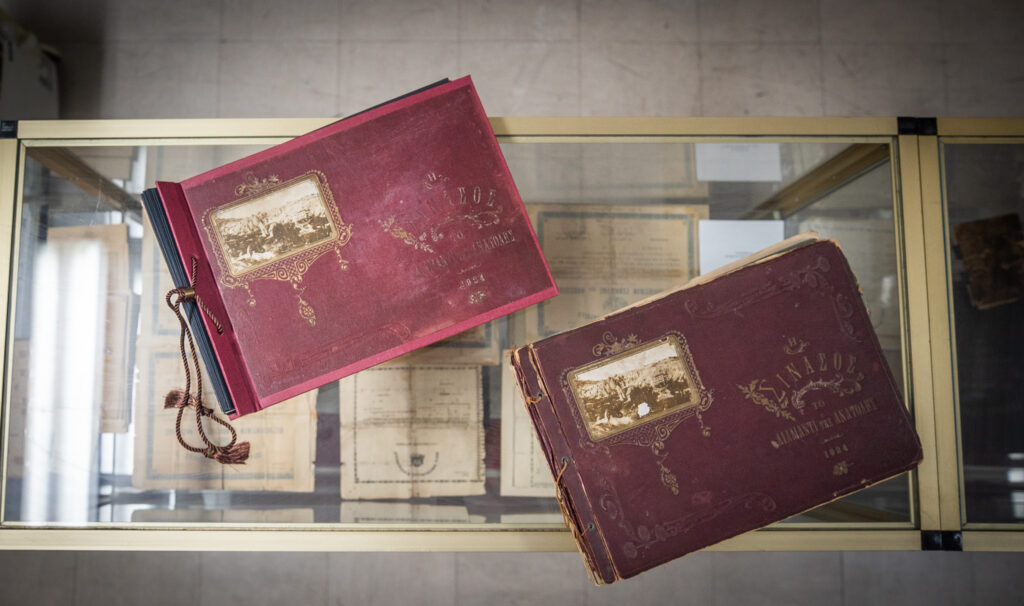
The photo album Sinasos of Cappadocia was published in Athens at the end of 1924. This album is a conscious attempt to preserve the past, i.e. the history, the traditions, and the collective memory of a community which does not exist anymore. The photographs coming from ‘there’ and the short texts written by the refugees in their new ‘here’ constitute an endeavour to reconstruct their old communal life, from its history and architecture to the local dialect and the songs they used to sing.
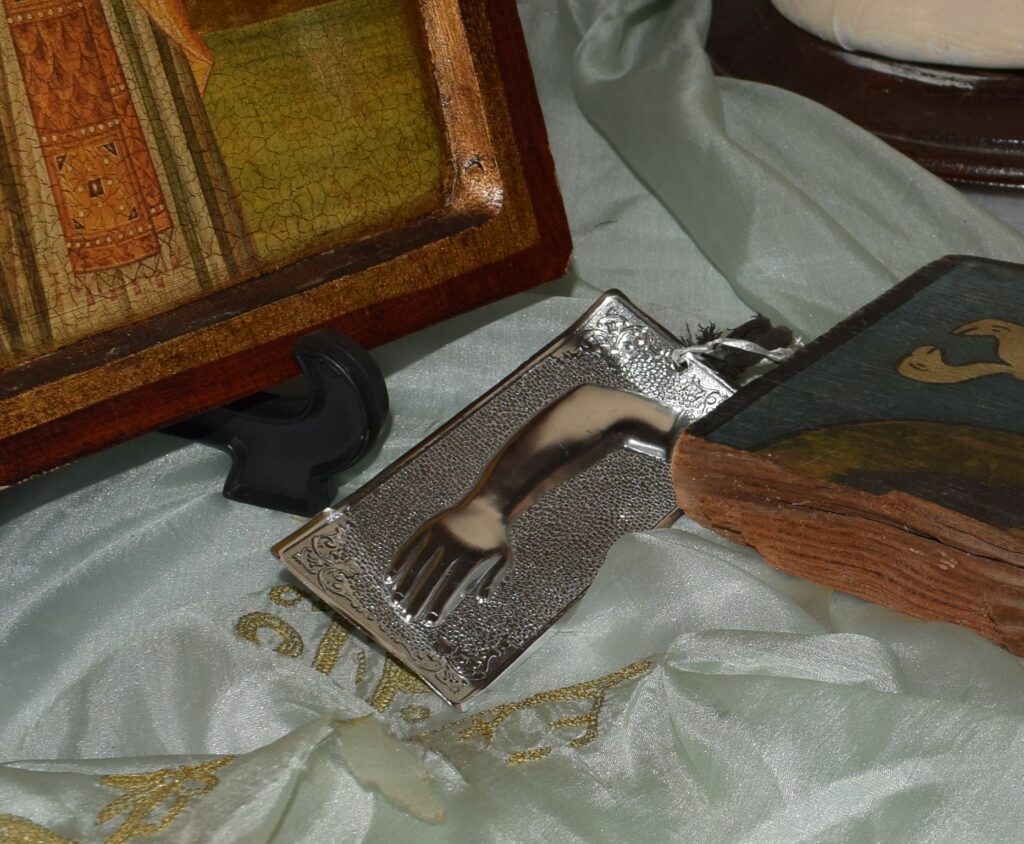
Metal plaques depicting two identical female figures holding a candle, a right arm, and a little girl are the votive offerings gracing the collection of the ‘Agios Polykarpos’ Brotherhood of Asia Minor Greeks of Chania, a collection of keepsakes donated by refugee families displaced from Asia Minor 100 years ago. The offerings depicting the female figures and the right arm appear to have come from a mould, while the one with the little girl was probably handmade.
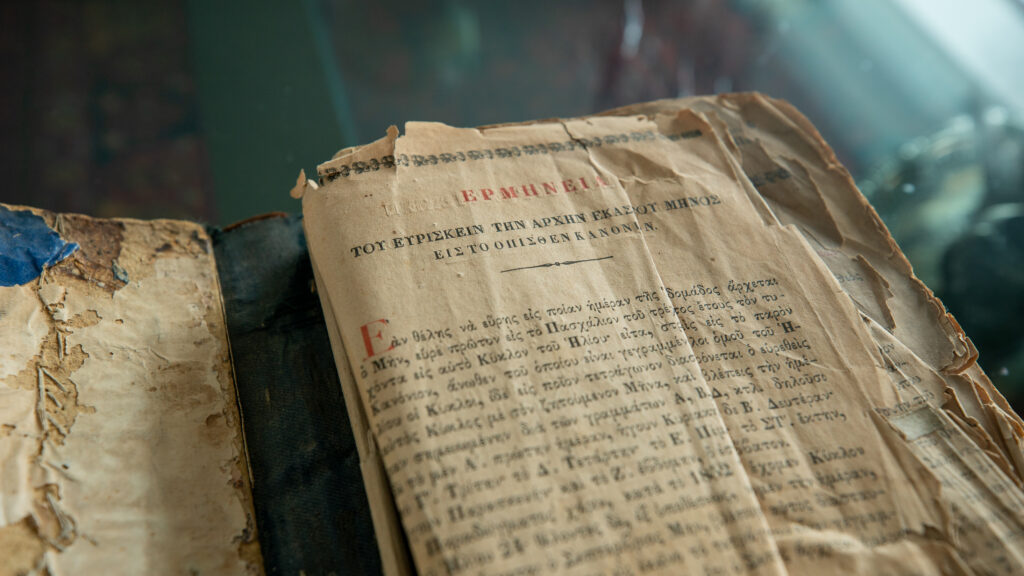
Anastasios Kalamakidis, like most Greek residents of Cappadocia, was a devout Christian. Among the few objects brought over to Greece by his family was his hymnbook.
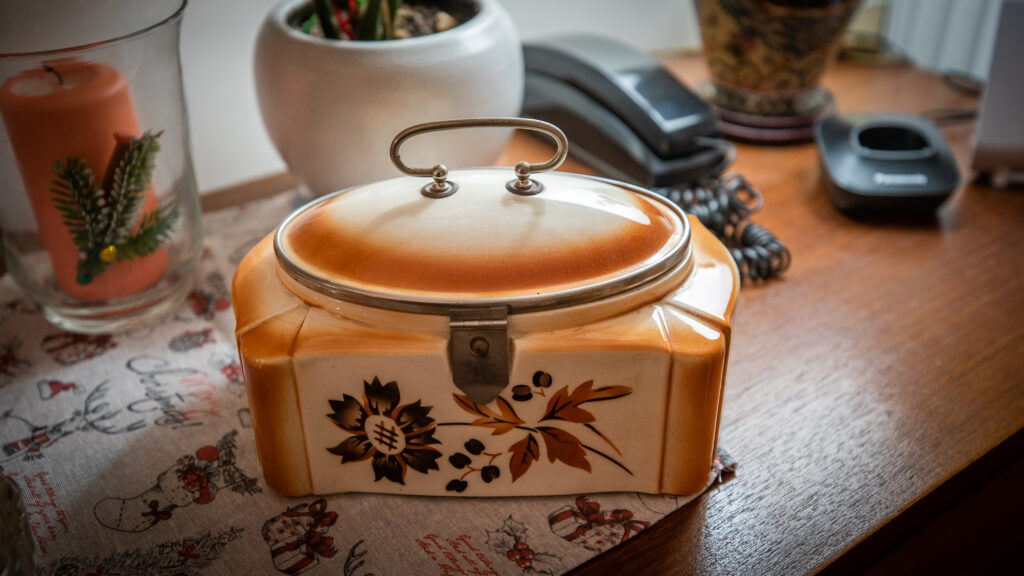
The population exchange could not stand in the way of Ioakeim and Anastasia’s love. As soon as Ioakeim made it to Greece, he wrote to Anastasia and they kept in touch. Four years later, in 1928, the couple got engaged in a letter, exchanging love vows in writing. Anastasia’s family in Constantinople celebrated the engagement by offering wedding favours to relatives and friends. Anastasia had one of these wedding favours in her luggage when she disembarked in Piraeus in 1929 and the couple got married in 1930.
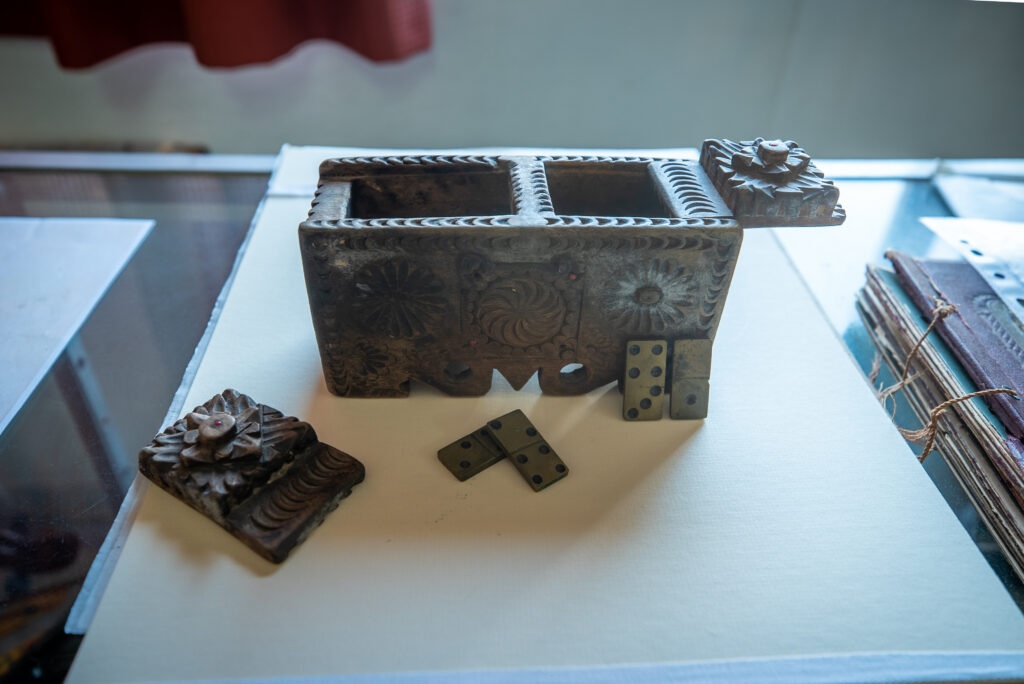
The two wooden domino sets displayed in the small museum of the ‘Nea Sinasos’ Association were brought to Greece by exchangeable refugees. Choosing to carry a game on a journey of displacement, alongside other, more practical and valuable items, might appear incomprehensible to us, especially since we don’t know who the original owners were or, most importantly, why they made this choice.
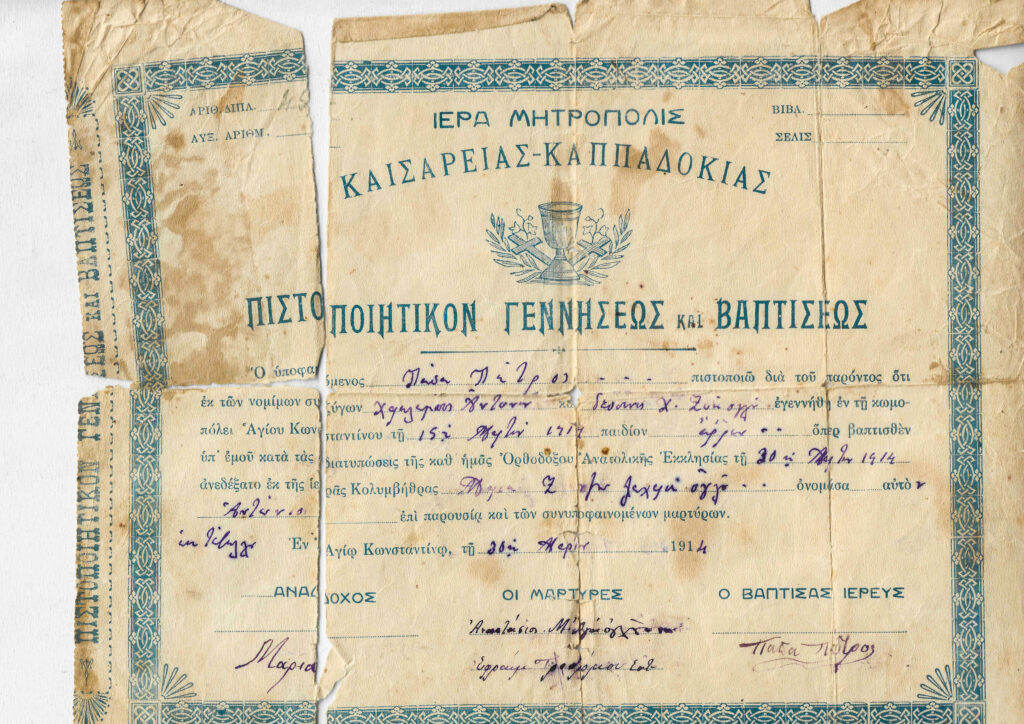
The family of Charalambos Sarantidis and Despoina Nikolaidou lived in a small town called Agios Konstantinos in the province of Kaisareia, which was a local financial and commercial hub. On March 15, 1914, the couple had their first baby. Right after birth, the baby boy developed serious health issues and the doctors thought he would not survive. The parents rushed to baptise him, which is why Antonis Sarantidis’ ‘certificate of birth and baptism’ was issued only five days after his birth, dated March 20, 1914.
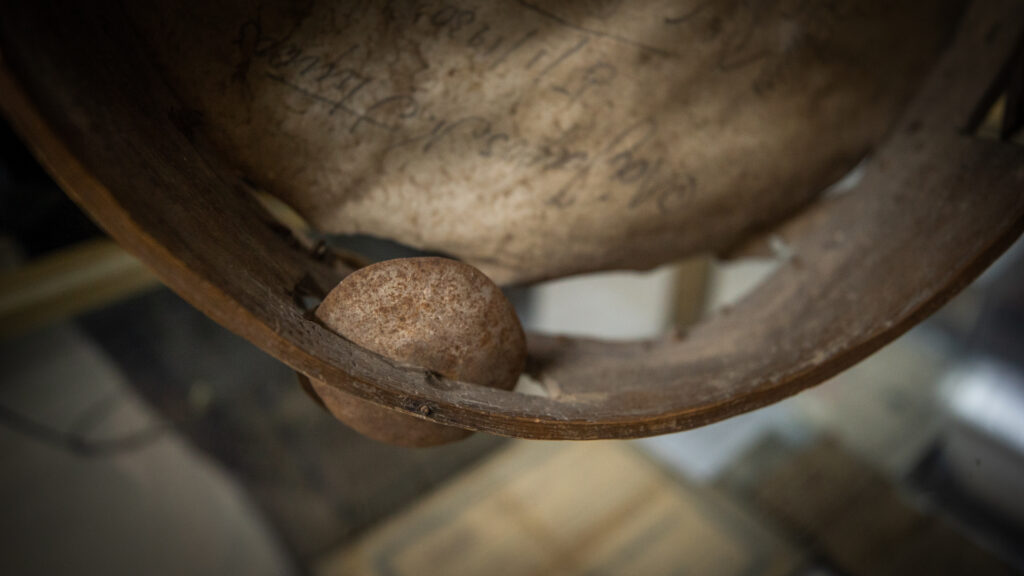
Vaso Pempe, Lazaros’ niece, remembers how, during moments of joy, the sound of the tambourine that Lazaros had brought over from Sinasos would carry through his house. ‘Uncle Lazaros loved a good party and his house was always open’, she says. When Lazaros’ second wife gave the tambourine to Vaso as a gift, she remembered all these feasts and parties that had brought the family together.
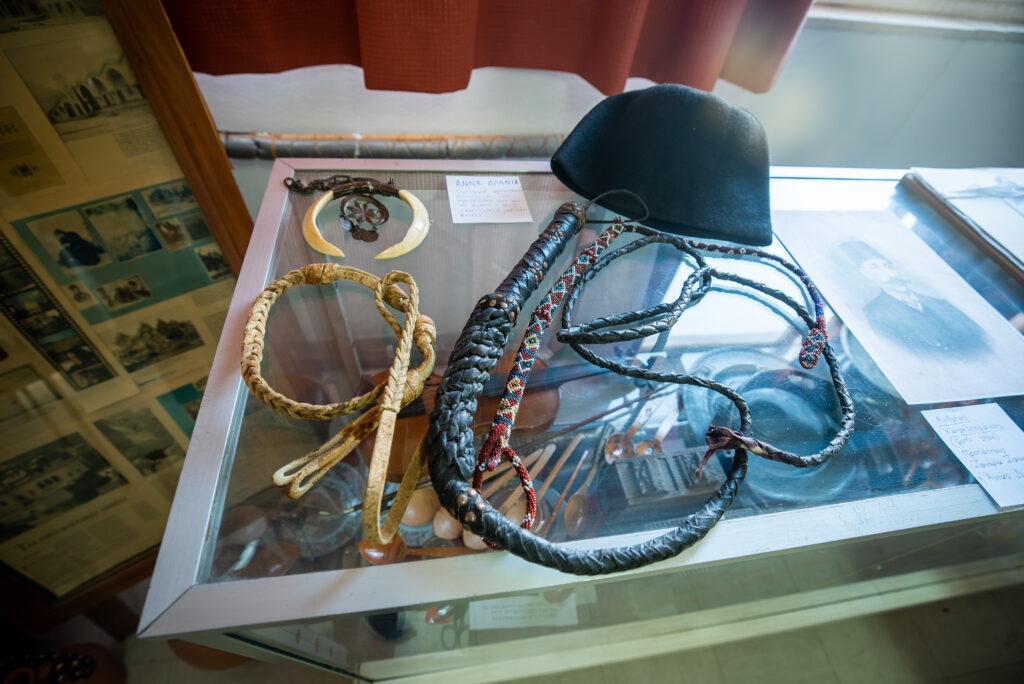
Anna Drania donated to the small museum of the ‘Nea Sinasos’ Association the horse decorations, the whip and the hat belonging to her great-grandfather Andreas Chatzitheofanous, who arrived in Greece as an exchangeable refugee in 1924. He was accompanied by his entire family and they all settled in Hydra, leaving behind their wealth and a comfortable life which Andreas tried to rebuild in Greece.
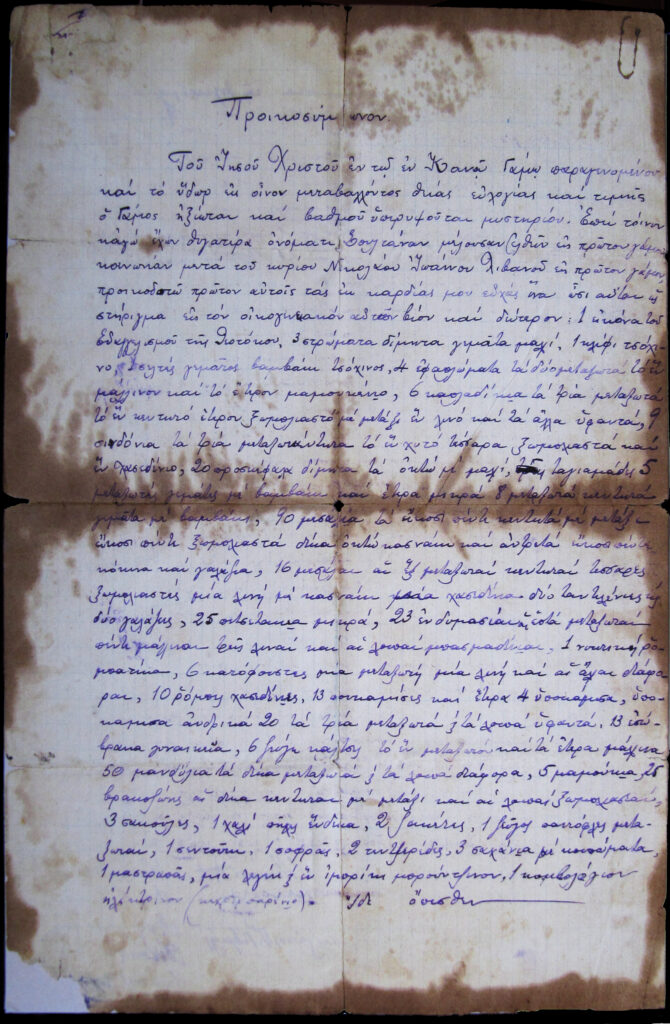
On September 5, 1909, a dowry agreement was signed by Father Gavriil Papazoglou, an Orthodox deacon and father of the bride (Soultana Papazoglou), and Ioannis Livanos, father of the groom (Nikolaos Livanos), for the upcoming ‘first marriage’ of the young couple.
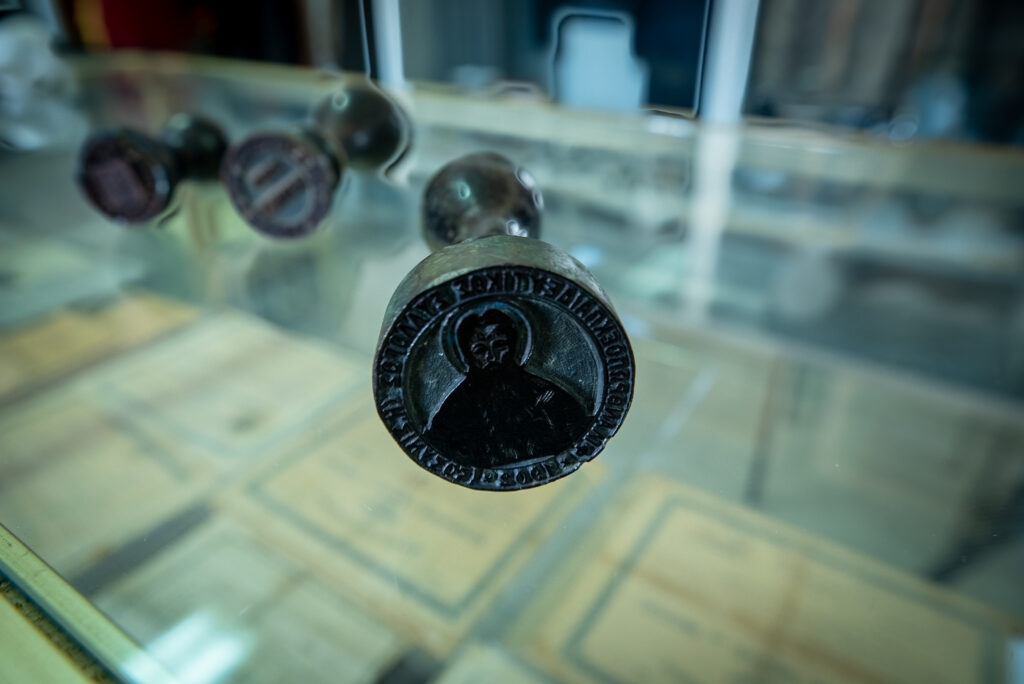
Even though none of the institutions of Sinasos would survive the resettlement in Greece and the new circumstances after the Exodus, its residents painstakingly packed and moved an array of community objects and registers, alongside their own personal belongings. Despite the fact that the three seals they brought to Greece were never used, they still attest to the meticulousness of the organising system the residents of Sinasos had to leave behind and its importance to them.









